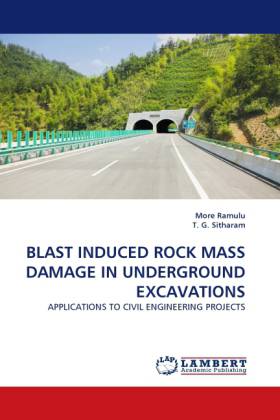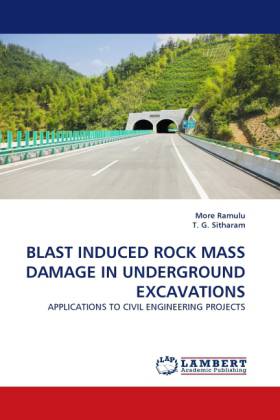
Je cadeautjes zeker op tijd in huis hebben voor de feestdagen? Kom langs in onze winkels en vind het perfecte geschenk!
- Afhalen na 1 uur in een winkel met voorraad
- Gratis thuislevering in België vanaf € 30
- Ruim aanbod met 7 miljoen producten
Je cadeautjes zeker op tijd in huis hebben voor de feestdagen? Kom langs in onze winkels en vind het perfecte geschenk!
- Afhalen na 1 uur in een winkel met voorraad
- Gratis thuislevering in België vanaf € 30
- Ruim aanbod met 7 miljoen producten
Zoeken
BLAST INDUCED ROCK MASS DAMAGE IN UNDERGROUND EXCAVATIONS
APPLICATIONS TO CIVIL ENGINEERING PROJECTS
More Ramulu, T. G. Sitharam
Paperback | Engels
€ 108,45
+ 216 punten
Omschrijving
Drilling and blasting is the most common and economic technique of rock excavation from the earliest days of invention of explosives to these days of modernisation. Although there have been significant developments in blasting, application of this technology for rock excavation induces damage to the remaining rock mass. The rock mass damage problem will increase manifold if the blast loading is applied repeatedly as compared to single episode blast rounds. The damage can easily extend a few meters into the rock mass and the deteriorated rock mass can give rise to serious support design problems in tunnels and caverns. This book deals with the quantification of blast damage as a function of rock mass quality (Q), which can be used for assessment of damage levels, in case of repeated exposures of vibrations. A correlation between damage and shear wave velocity was also established. The book also illustrates the effect of joint orientations on blast damage to enhance the safety and stability of underground excavations.
Specificaties
Betrokkenen
- Auteur(s):
- Uitgeverij:
Inhoud
- Aantal bladzijden:
- 208
- Taal:
- Engels
Eigenschappen
- Productcode (EAN):
- 9783843393188
- Verschijningsdatum:
- 14/03/2011
- Uitvoering:
- Paperback
- Afmetingen:
- 150 mm x 220 mm
- Gewicht:
- 313 g

Alleen bij Standaard Boekhandel
+ 216 punten op je klantenkaart van Standaard Boekhandel
Beoordelingen
We publiceren alleen reviews die voldoen aan de voorwaarden voor reviews. Bekijk onze voorwaarden voor reviews.









